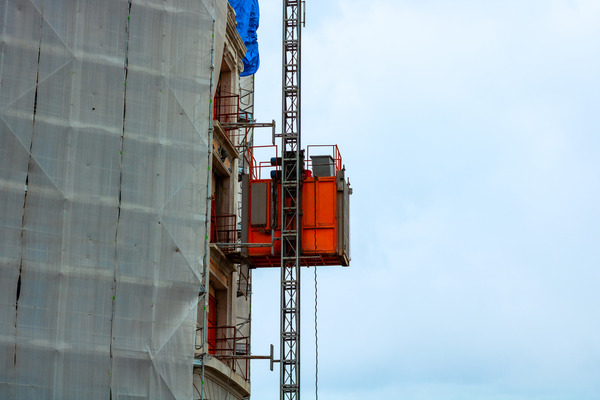If you’ve been injured in a buck hoist accident on a construction site, it’s crucial to know your rights and the steps you can take to ensure you’re properly compensated. Here, we’ll explain your options in straightforward terms, with insights tailored for clients of The Weinstein Law Group.
If you or a loved one were hurt on a work site, call our New York construction accident lawyers at (212) 741-3800. We look forward to hearing from you.
What to know about buck hoist injuries
A buck hoist is like a temporary elevator used on large construction projects to move workers and materials between floors. While they’re incredibly useful, they can also be dangerous if something goes wrong due to mechanical issues, mistakes in how they’re operated, or poor maintenance.
What types of injuries are common in buck hoist accidents?
Buck hoist accidents on construction sites can result in a variety of injuries, ranging from minor to severe, depending on the circumstances of the accident. Here are some common types of injuries that can occur:
- Falls – Injuries from falls can include fractures, head injuries, spinal injuries, and in severe cases, fatalities.
- Crush injuries – If the buck hoist malfunctions or if there’s a failure in the hoisting mechanism, materials or the hoist itself may drop, causing crush injuries to workers below. These injuries can be extremely severe, including broken bones, internal injuries, and traumatic amputation.
- Struck-by injuries – Workers may be struck by objects falling from a buck hoist, especially if the load is not properly secured. This type of injury can lead to cuts, bruises, fractures, and head injuries including concussions.
- Electrical shocks – If a buck hoist comes into contact with live electrical wires, operators and nearby workers can suffer electrical shocks or burns, which can be fatal.
- Lacerations and abrasions – Handling materials on or off the hoist can lead to cuts and abrasions if safety protocols are not properly followed or if the equipment is defective.
- Musculoskeletal injuries – Operating a buck hoist or loading and unloading materials can lead to overexertion and repetitive motion injuries. These might include muscle strains, joint damage, and chronic back injuries.
Each of these injuries requires immediate attention and could lead to long-term health issues or disability. Ensuring that all safety measures are in place and followed rigorously can help prevent such injuries. Additionally, proper training for all workers using or working near the buck hoist is essential to minimize the risk of accidents.
First steps after a buck hoist injury
- Get medical help – Your health comes first. Make sure to see a doctor and keep track of all your treatments and bills.
- Report your injury – Tell your employer about the accident as soon as you can. This is important for the next steps in seeking compensation.
- Gather evidence – Collect any information that could help your case. Take pictures of where the accident happened, get contact details from anyone who saw it, and note down anything unusual you noticed about the buck hoist or the site conditions.
Your legal options
In New York, most workers are covered by workers’ compensation, which helps pay for your medical bills and part of your lost wages if you get hurt on the job. Here’s what you should know:
- You don’t need to prove anyone was at fault to get these benefits.
- Once you accept workers’ compensation, you generally can’t sue your employer for the injury.
Third-party liability claims
If someone other than your employer contributed to your accident—like the company that made the buck hoist or another contractor who didn’t maintain it—you might have a third-party claim. This type of claim can provide compensation for things that workers’ comp doesn’t cover, such as pain and suffering.
How The Weinstein Law Group can help
The Weinstein Law Group knows how to handle the complexities of construction accident claims. We can help by:
- Evaluating your case – We’ll look into who is responsible for what happened and figure out the best way to proceed.
- Handling your workers’ comp claim – We’ll make sure all the necessary forms are filled out correctly and filed on time, and fight to get you all the benefits you’re entitled to.
- Pursuing other claims – If there’s a third party who should be held accountable, we’ll take the necessary steps to seek additional compensation for you.
Key laws to know
Specific laws in New York, like Labor Law Sections 240 and 241, offer extra protection for workers involved in height-related accidents, which might include some buck hoist incidents. These laws make sure that job sites meet strict safety standards.
Work with our top-rated construction accident lawyers
The Weinstein Law Group is ready to help you sort through your workers’ compensation claims and explore any potential third-party claims to ensure you receive the full compensation you deserve.
If you need help or want to talk about your buck hoist injury, contact The Weinstein Law Group. We’reready to support you through each step of your recovery and legal process.


